

The 8-by-8 system is a strategy first approach where you start by creating the deck recipe. The recipe is split into two parts, primary mandatory strategies, and secondary optional strategies.
"Up to 8 different strategies, with on average 8 cards per strategy."
You no longer need to feel scared that your new deck won't work! Follow the recommendations made by the 8-by-8 system, and your deck will immediately perform admirably! Click HERE to jump to a reasonable starting recipe that you can get started with today!

The recipe contains our strategy priorities. Primary strategies are the most important as then ensure the deck functions consistently, and secondary strategies give the deck its flavor and are your creative influence on the deck. You can also apply a strategy sub-theme either throughout the deck or just in particular strategies. This can be documented as part of the deck goals.
Sub-themes can be things like a particular type of card draw eg. artifact etb(enter the battlefield) draw, or creature etb removal (creatures that destroy permanents on entering the battlefield). These can help ensure a deck remains more true to a particular theme. An example of this impacting an entire deck would be something like every card should be pirate related, either in artwork, name or effect.
Its important to remember, primary strategies are mandatory i.e. you must have these in all of the decks you build, in sufficient quantities for the deck to work. Secondary strategies are subjective and entirely up to you. They are the spice you add to make the deck really sing your song.
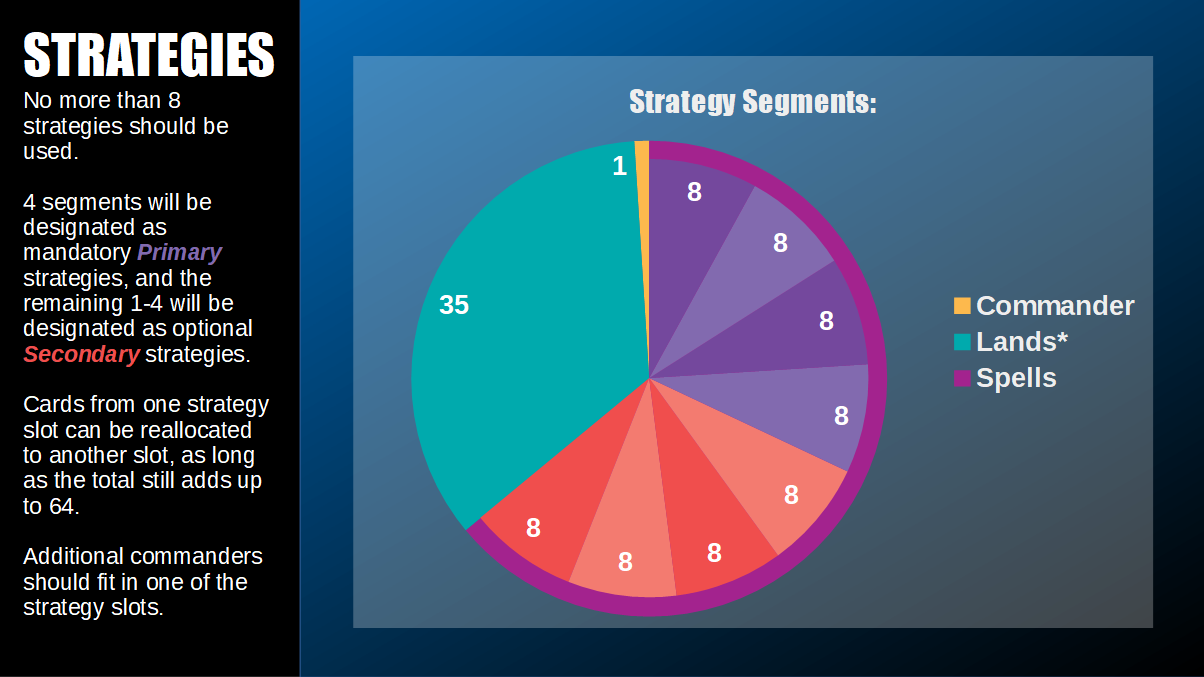
The goal is for recipe construction to be quick, and to provide the initial framework you start building from. You are not obligated to stick to exactly 8 strategies, you can have anywhere between 4 up until 8. Going higher than 8 can result in your strategies becoming too diluted and this reduces their effectiveness.
Example of how a recipe looks once we have decided the totals:
See below for explanations about the ratio totals in the square brackets.
This kind of break down is very common when I start designing a new recipe, often its a simple copy and paste and then some slight modifications. To understand the recipe a bit better, we need to have a quick look at what these numbers mean.
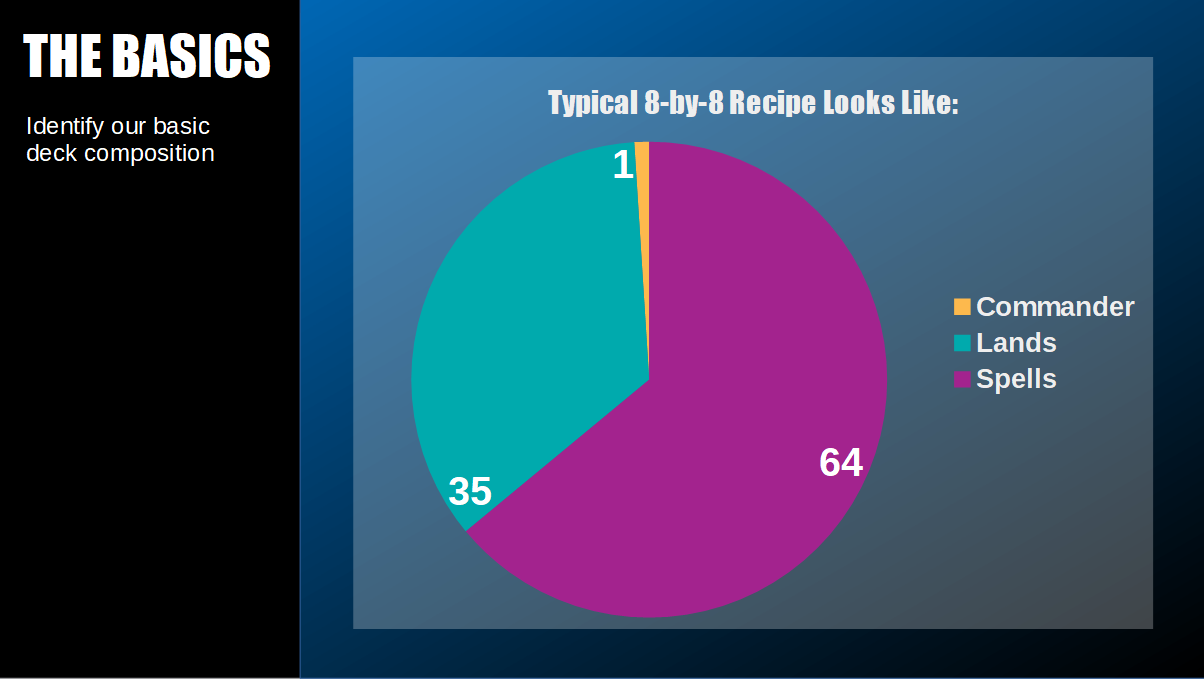
A typical high-level baseline deck breakdown is as follows:
Conveniently with this kind of equation we get the glorious "8x8=64" equation hence the 8-by-8 EDH moniker. Land totals and strategies will be discussed later in this guide.
Note: If you have a second commander, it should fall under(be counted as part of) one of the strategy categories in the recipe. For example, if your second commander is providing an "Anthem" style ability, then you should atleast have an Anthems secondary strategy with atleast 4 cards allocated to it. This is to encourage you to build more synergistically with your commanders.
You will notice in the many recipes I posted on my instagram account or in the various examples here in the 8-by-8 guide that I put strange little numbers in the recipes. The numbers in square brackets eg. [0.5] are a way to help you more easily calculate card totals, for example:
I found doing smaller number sums like 0.5 + 1.5 + 2.0 + 1.5 = 5, is much quicker to calculate than bigger numbers like 4 + 12 + 16 + 12. After spending a few years working with this system, this once concept has really stuck, and it really helped me a great deal. I like it also because it encourages you to think in segments of 4 as a baseline, and reads really well as it mostly keeps the numbers as single digits (one before the comma/period and one after).
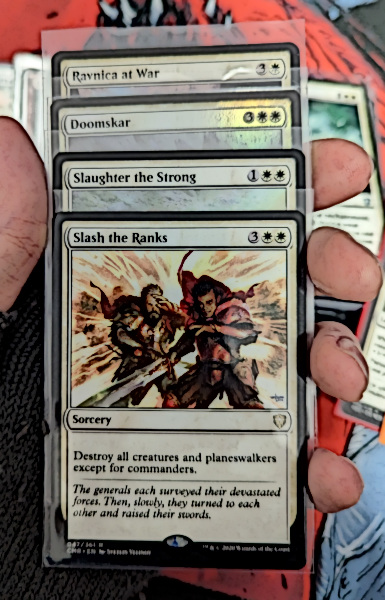
To avoid making a strategy too weak, we need to ensure there is an absolute minimum number of cards in it. For the 8 by 8 system, this is 4 cards. This also means, when making any strategy adjustments, they should always be in increments or decrements of 4.
Its still fine to swap out single cards, but keep in mind that they should be replacing like-for-like. Change cards within a strategy, but stick to the strategy total you set in the recipe.

Lands can be also be broken down into multiples of MVS categories however as we working with 35 lands in most of our recipes, its not always going to round off so well. I would recommend filling the gap with basic lands. As a rule try to avoid having less than 9 basic lands in a deck, as you should be trying to diversify your ramp strategies as well as to protect yourself against non-basic hate cards like "Blood Moon".
Lets start off by classifying some different kinds of lands (feel free to create use more categories like "bounce lands", "gain life lands" or "cycling lands"):
Next, we should think about what categories of lands make sense in different the different mana-bases. Not all kinds of lands belong everywhere, consider fixing lands in mono-color manabases... this is pretty useless. Fetch lands in 2-color mana bases are way less useful than 2-color lands are, so you could reserve these for 3-color and up decks. The reason I bring this up, is because you won't always have enough money or cards to afford to put in the best most expensive (dual or fetch) lands in every deck you build, so instead being frugal with what you have, and using cards in decks where they make the biggest impact makes sense.
In the mana base descriptions that follow, I provide guides for minimum number of basics, what types of lands to use for that type of mana base, and also links to Scryfall with carefully cultivated searches that return all the lands that fit that particular mana base (this took me ages to assemble!).
Mono-color manabases are the simplest to build, and you can often get away with using only basic lands. I would recommend not oversaturating with utility however, and as a general rule have no less than 12 basic lands, primarily as land ramp mostly requires basics.
The consequences of oversaturation(of a particular category of non-basic land) is usually only getting tap lands or only colorless lands, which would slow you down and and also increases risk that your deck doesn't function properly.
Here are some links to scryfall land searches to help find lands for each of this kind of manabase:
2 Color manabases are also fairly simple to setup. You definitely don't want to have only basic lands in this kind of manabase as its very risky. I can't tell you how many times during playtesting I had situations where I am flooded with one kind of land and not the other. Fixing Lands are absolute gold in decks with 2 or more colors. You still want to avoid having too few basics, as this hinders your ability to ramp effectively.
Utility lands become less helpful as your number of colors increase, as often they produce colorless or just a single mana color and you can severely undermine your chances for success by having too many.
Here are some links to scryfall land searches to help find lands for each of this kind of manabase:
I separate fixing and fetch into tow different categories even though they seem to be similar. Fetch does fix your mana, but typically fetch lands needs basics to function well. They should never out number your basics, and if you are going heavy into land ramp, then consider increasing your basic land count. The ultimate fixing lands are those that produce 3 colors or more of mana, the worst are transmute lands that need one mana to make one mana (2 lands to make one... not a good conversion).
Bounce lands, you either love or hate them. From experience, the hatred is mostly due to misunderstanding the order to play them and their percieved slowness. However, I want you to consider the following points. Never play a bounce land before playing a spell, as you will lose a card. The bounce land is not ramp, instead it ensures you hit your land drops more reliably, and if you are playing cards that give you extra land plays in your turn, they are very strong. They also let you return ETB/Channeling utility lands or MDFC lands back to hand at a later stage to get an extra contingency interaction.
Here are some links to scryfall land searches to help find lands for each of this kind of manabase:
Much the same as 3 color manabase, the expectations are about the same. There is one big caveat here, you will always have access to one good ramp color. This must form the predominant basic land color, and this ensures that your ramp spells can be mostly that color and ensure more reliable ramping. Its worth mentioning that its also not a good idea to have too many (if any) colorless only identity lands.
Here are some links to scryfall land searches to help find lands for each of this kind of manabase (lands with colorless identity are omitted):
Avoid colorless utility lands as much as possible with a 5 color manabase. They help you the least in this break down, and are mostly just a hinderance. Fetches are very valuable and you definitely need to increase your basic totals as you can definitely play green ramp. In most cases, you want green to be your primary ramp color, so most of your basics should be forests to ensure you match your main ramping color.
Here is a link to a scryfall land search for this type of mana base (it omits lands that are purely colorless in their color identity):
Having a good Mana Curve refers to the idea that you want a mix of low, medium or high costed cards. When determining a strategies mana curve, you will separate the cards into groups based on their mana value (mv). As a result of how the 8-by-8 system breaks up the deck into various strategy subsets, its actually much easier to manage the decks mana curve. Different types of strategies will also want to have different mana curve considerations.
Its easy to work out your average mana costs on a per strategy basis, and perform either an MV average calculation or draw a graph based on totals:
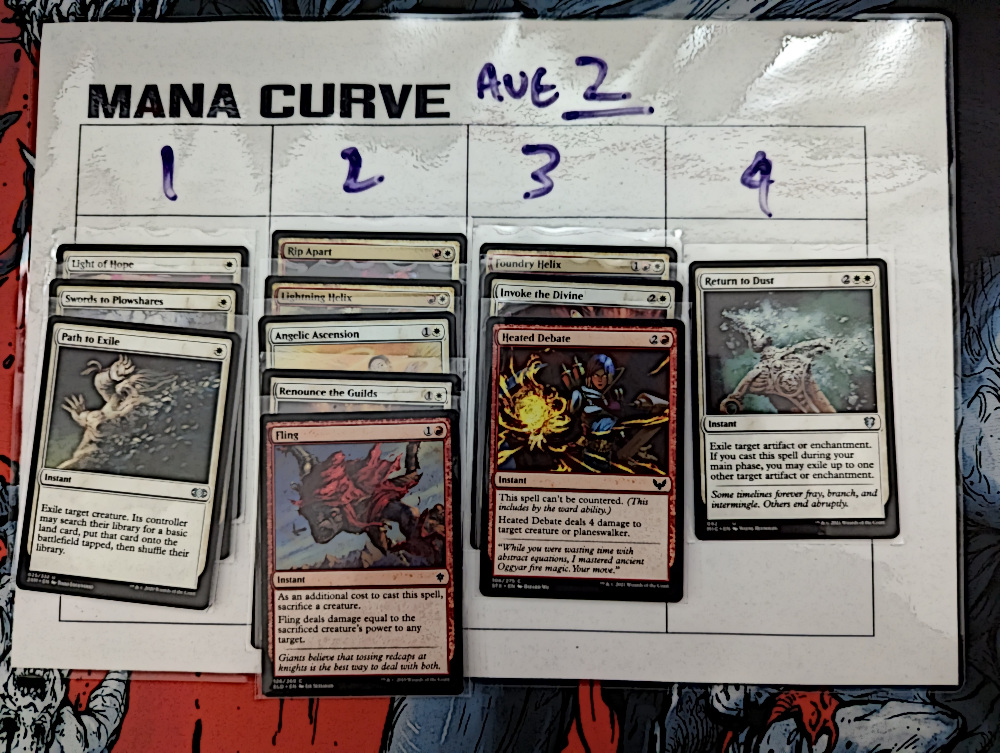

Here are some examples of how you can use the MVS (minimum viable strategy) to analyse your mana curve:
NOTE: This bars below represent 4 cards multiplied by the average mana value(mv) of the segment. So if a segment is for mv's 1-2, then the average mv would be about 1.5. And for mv's 2-4, then the average mv would be about 3.
This mana curve might be a bit steep... so we may want to consider dropping the highest MV cards for cheaper options. This can be mitigated by ensuring the deck has a bit more ramp in it.
Having more MVS segments, and increasing the strategy total from 8 to 12 cards can help smooth things out as well.
At higher strategy totals, we can get very reasonable curves and even go for more expensive cards at the top end.
This approach helps ensure you have enough spells at each mana value level for the deck to be reasonably playable. What we can see from the examples, is that having enough MVS sub-segments in a strategy allows for better cost control. We also see that the bigger the strategy, the more our top-end cards can cost.
If you are going to play janky or expensive mana spells but with smaller strategy segments, then you definitely want to increase your primary ramp strategy total (eg from 12 cards to 16 or 20), so that you are more likely to be able to play them.
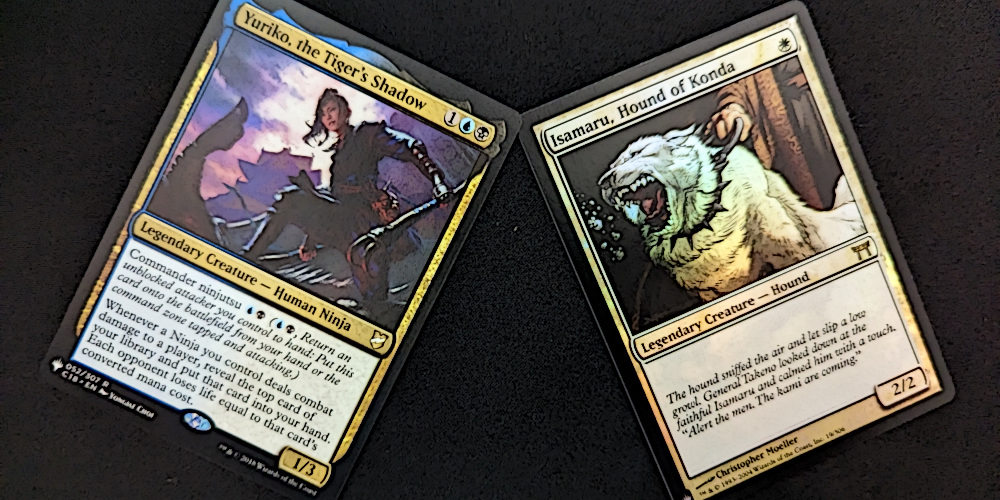
In order to compare things with other things, we need some agreed upon (scientific) measure which can be used for the comparison. What the 8-by-8 system provides us with, are a few documentable metrics that we can use to help work out power levels. The key difference between the 8-by-8 power level indicator approach and a simple numbered power level, is that the 8-by-8 system acknowledges that there are two different types of play environments (casual and competitive). The sections below will differentiate power level considerations based on the contrasting goals for these two different build/play styles.
Here are the baseline concepts to be aware of before continuing:
These depend on the cornerstone context and the specific measure will be explained in each section.
Now lets look at these in more detail, and I will explain also how we can rank cards based on the criteria mentioned above.
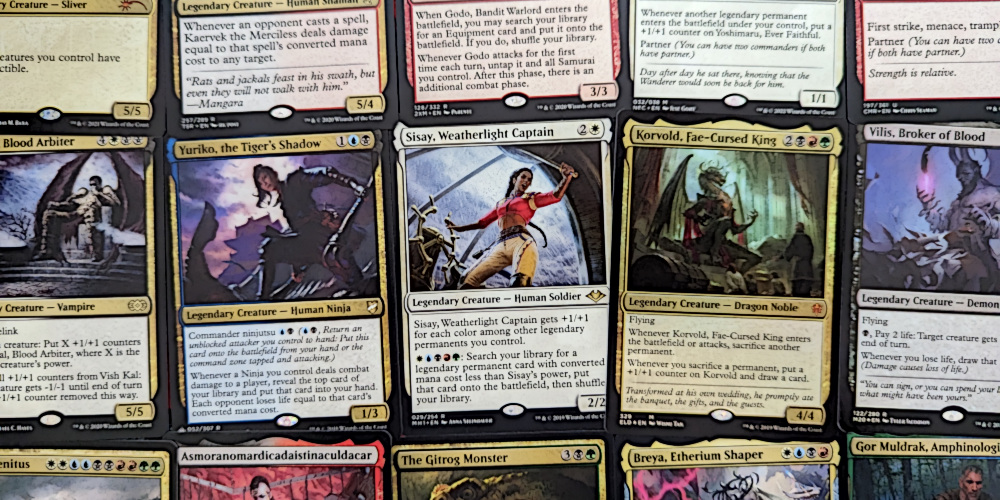
In most competitive decks, the commanders aren't the priority, rather getting the combo to work is. When deciding which commanders to choose those that meet any of the following requirements are suitable:
When talking about casual decks, the strongest commanders are those that meet atleast 2 or more of the following requirements:
Now you might be thinking, "Oh but I played against so-n-so commander.. and he was really strong!", and you are correct. In that game, that commander clearly stood out as strong. But that doesn't mean that in all games, that commander wins every time. Often games are highly circumstantial, and player decisions lead to imbalances making commanders seem stronger or weaker. It is therefore important to consider a commanders worst case scenarios and assume that will happen and have strategies in your deck to compensate (contingencies).
Its up to the individual deck builder to determine just how much synergy with their commander they want. Casual players are more likely to build synergistic decks, as competitive players prioritize speed, efficiency and winning over synergy. But in most cases, the commanders considered more generally more powerful are those that provide some kind of card advantage or that can form part of a (instant win) combo.
The way to rank commanders depends on the requirements listed above, but is fairly straight forward:
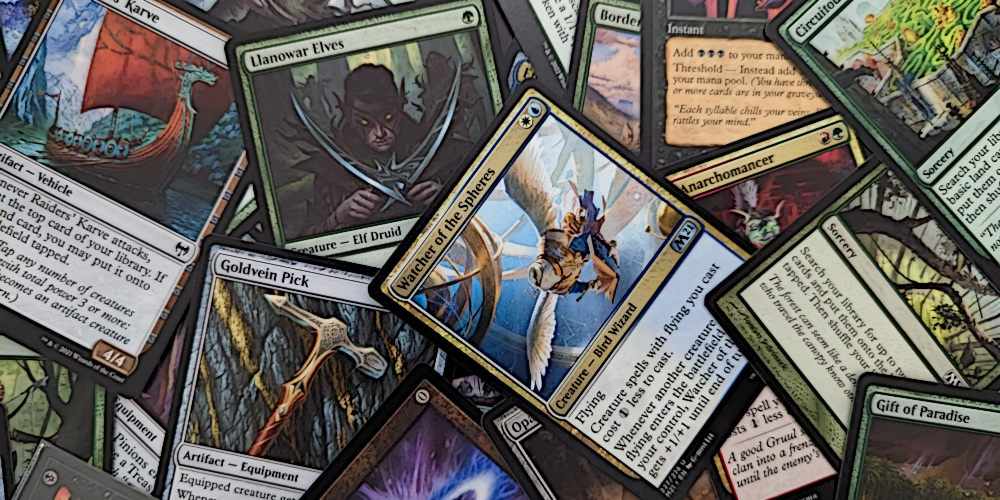
CEDH builders always want "Free food" type mana production. Its gotta be cheap (even temporary), and only needs to get them to the point of comboing off with just enough extra to throw out some counterspell protection. They rely heavily on the cheapest artifact ramp and they don't concern themselves with the opponent throwing down a vandalblast, because the game should already be over by that point. Here you want your ramp curve to be super flat, like almost flat-lining at 0 or 1mv. You can even get away with cards that let you scry and draw instead of ramp, purely because it just gets you to your next land drop.
Casual builders need to look at a longer term boardstate investment. Where commanders get more expensive to cast over time (due to removal), and the impact you make can be much bigger in the mid to late game due to increased mana capacity. You have more turns to cast spells, but to do this really well, you want to diversify your ramp portfolio so it matches your requirements at any point in the game. Early game, you want a couple cheap ramp spells. Mid-game you want to make sure you hitting your land drops. Late game you need to go big or go home, so large bursts of mana to dump into an epic bomb of a spell are desirable. Segmenting your ramp strategy with a reasonable curve is very easy with the 8-by-8 system.
For competitive play:
For casual play, having a good curve and more diverse ramp options (not all mana rocks!) is considered better. Notch it down a tier if your ramp is not balanced, and up a tier if your commander helps you ramp.
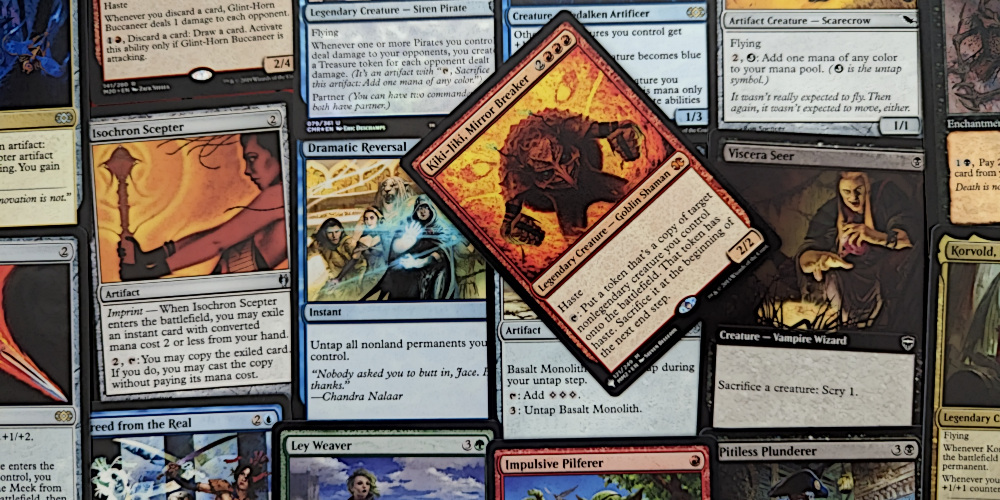
Too many combos spoil the deck soup (this goes for both casual and competitive players). Imagine you running a deck full of combos, from the ultimate 2 card combo to multiple 5+ card jank combos. Each card is taking up valuable space in the deck that could be helping you actually do stuff, like draw a card, ramp up mana production, play some interaction... wipe the board. Instead you are hoping to just top deck the next possible combo piece, and you are not actually getting anywhere. Powerful decks avoid overloading themselves with too many combos. Keep these to a minimum, between 4-8 cards at most. The way a powerful deck gets more value out of less combos is to use tutors to help you get the missing pieces, or even to help ramp or get a key land.
A surefire way to change a decks power level is to simply add/remove tutors. Changing combos from a 2 card combo to a 4+ card combo is also a way to do this. This can easily be documented in your recipe, and the strategy segment can quickly be substituted.
If you running tutors and the most efficient 2 card combo's then you are playing a competitive deck (CEDH).
For competitive decks factor in tutor cheapness, combo cost, and number of combos into the tier rating:
For casual play:
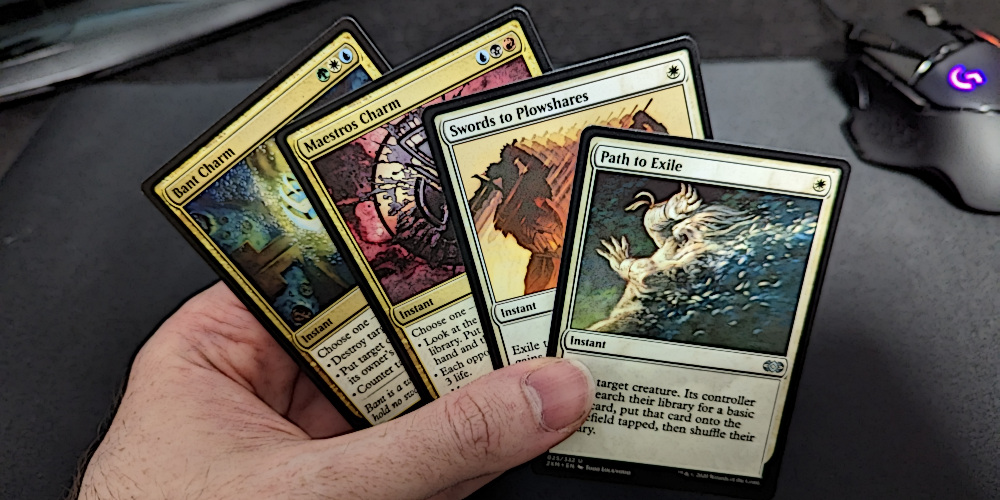
Here I address the age old question about deciding what to put into your deck. Lots of cheap spells that do just one thing at a time, or lots of expensive spells that offer a choice of options (think charms etc.). Essentially with this question we are trying to compare super efficient spells vs super versatile spells. The thing that has the whole community in an uproar over power levels, really comes down to the goal of the deck. Either you are building it for Casual or Competitive play, and these two really are on opposite ends (I would even go as far to call them mutually exclusive).
In CEDH games where we want to combo off as soon as possible, then hyper efficient cards are the key to power. These are low cost cards, that give you just enough value for the minimum amount of mana, and often are instants. This value can actually be calculated mathematically to work out the value versus every other card. A side effect of these kinds of low costed cards, is they tend to give you "hot flashes" of activity, with the goal being either to combo or stop a combo. Think of a spell progressions such as, 1 mana tutor to top of library, 1 mana cantrip to draw solution, cast counter for "free" by discarding something. You just stopped an opponents combo with just 2 mana, but you burned multiple resources in the process. But its worth it because you are still in the game and have a chance to win. These kinds of decks want really low mana curves, and all the most efficient value for mana instant speed spells, that get you to your combo. Don't be fooled when someone uses a two/three card combo in what they claim is a casual deck, they are instead playing with a low power CEDH deck versus your casual.
In non-competitive EDH deck builds, we measure the power in a different way. Instead versatility is more valuable, as we all operate under the assumption that opponents are not running super efficient combos that insta-win the game. We have more time to build up board states, and thus we need a greater variety of choices to deal with all the pieces. In these types of decks, we still want a reasonable mana curve in our various strategy segments, but our top end MV's can be higher. Casual combo's are those where you aren't actively seeking the combo, instead you happen upon them, and often you need multiple parts for it to work. Here, intricacy of the mechanics of the combo are what people respect, not efficiency. Here your segments will value diversity of choices, and keep hyper efficient spells to a minimum. You want to focus on keeping your hand full, your mana ramping, and your board full of permanents.
Competitive, efficiency is king so we only really consider average mana value:
Casual, we look more at a balance between efficiency and versatility:
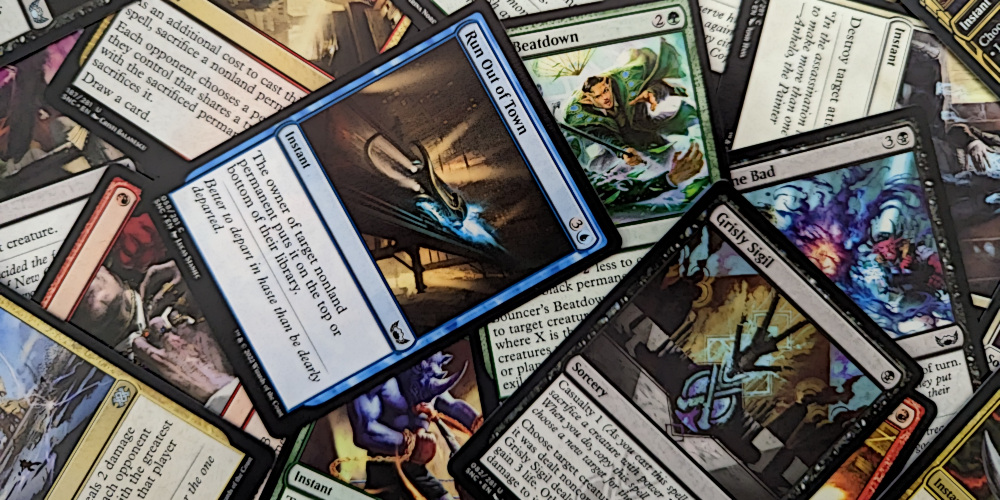
Irrespective of whether you building competitively or casually, if you don't play enough interaction eg. removal (destroy target, return target), counter spells or wraths (or resets like Cyclonic Rift), your deck will in most cases fall flat and not be as fun as you thought. Most rookie deck builders make this mistake, usually because they don't want to be mean or to interfere with their friends decks. The reality is, that doing nothing enables your opponents to bully the table and then you are at their mercy entirely. This makes games very unbalanced, and not fun at all. Magic simply isn't a game you want to play all by yourself in a corner, its literally all about interaction.
Interaction refers to spells or abilities that can be played in response to an opponents action, and typically affect the board in some manner. Whether it is exiling, countering, bouncing, destroying or even protecting something.
Competitive interactions depend heavily on the current meta (based on what the current most fashionable way to win is). The meta changes depending on new card releases, and official ban lists. If the current meta combos contain lots of enchantments, then you will need to play efficient enchantment removal. If it focuses on creatures, then creature removal and so on. You don't have mana to waste on versatility, instead, you want efficiency and focus. Its really a gamble, and you have to make assumptions about what your opponents are most likely to play. The trade-off is winning or losing by the finest of margins.
Casual interaction is less meta oriented, and not only aiming for efficient removal. Ideally here your interaction would follow a reasonable curve, and have some diversity in costs. Some of the spells would be efficient (you never know when you need to remove something, and might only have limited mana available), others would be more versatile, with more options or target types to give you choices that you can make to deal with any problem that arises. Maybe instead of destroying an artifact, you need to draw a card? These choices are more valuable to players in a casual setting.
Reviewing a deck using the 8-by-8 system is actually very easy and will help not only show you how effective a decks strategies are, but what needs to be changed to improve the deck. This guide is more suited to analyzing casual decks, for CEDH is better to look online for deck lists to see what other players consider to be the current top tier cards.

I highly recommend playing the deck a few times (even just checking initial hands) before tearing it apart. For this process to be most beneficial (and scientific), it helps to see a deck failing or succeeding before you change it. This will form some baseline expectations you can measure against, after you make changes.
The first thing I do when reviewing a deck is check the land totals. I immediately aim to reset it back to the default 35 lands, unless it has a good reason for more lands or less. Here we want to find out if the lands used make sense, and what kind of non-basics are provided. Non-basic lands provide the best forms of fixing, so ensure the right quantities are available. See the Land Strategies section for examples of what to expect.
The next part is to separate all the spells into different strategy categories. Primary strategies are often easy to spot, secondary can be a bit challenging.
There will be cards that fit multiple strategies (due to high versatility. In a case like this, pick the cards best mode (its okay to be subjective) and go with that.
Often you will find cards that don't have any obvious friends. Sometimes its just that you need to think a bit more about how it works, other times its simply considered a "goodstuff" card so it was thrown in. These odd-balls, can immediately be set aside.
Most pre-constructed decks come with a strategy insert. I recommend reading through this to identify the decks sub-theme. This is what the deck designer used when deciding which secondary strategies to build with. This will also identify why certain strange cards might be part of the deck. There are definitely cards that when put alongside particular commanders, benefit from some kind of amplification.
Once you have the proverbial "lay of the land", you can move onto determining strategy effectiveness. To do this, look at card totals in each strategy and their respective mana curve. You would expect primary strategies to form the bulk of a deck, around 63%. Remember the recipe I showed here... This is a reasonable example for typical strategy totals expectations.
If any primary strategy contains less than 12 cards (except resets), then the deck is probably suffering from an imbalance. Try see if there is a reason for this, it could be that the commander performs that role, so less of that strategy is required. Often pre-con decks are not super balanced, and are missing having enough resets.
Analyzing secondary strategies is a bit more involved, as they are normally subjective. The key here is commander synergy, do the strategies in the deck work well with the commander, or do they work against the commander. It could be that some "good-stuff" cards actually result in a conflict, so these are candidates for replacement. Also, based on the decks sub-theme, some cards might make sense, but these are also easy candidates for removal if you have other directions you want to take the deck in.
Now that you have a good idea of what is in the deck, have identified what works and what doesn't. You are now ready to write a new recipe for the deck.
For this just a pencil and paper is required, and the goal here is to write down what you want the deck to be like. Stick with more standardized totals to begin with, and refine the recipe later during play testing.
As MTG is a game based on randomness and probabilities, you will often need to play test a deck quite thoroughly to get the right amount of data to say whether the deck is working or not. The 8-by-8 system attempts to mitigate failures, through ensuring the probabilities of getting cards of a particular strategy happens with the right amount of regularity.
Strategy ratios directly translate into probability of drawing the strategies you need, and this is the key to success and balance. MTG is a game relying on randomness, however, so we need to understand that failure cannot be completely mitigated. What we are more interested in, is reducing the probability of failure. Decks fail when you feel like you are in a "Lull" or lacking interaction. So during play testing, you want to see how often you end up in this kind of situation. This will show you what cards feel frustrating, like you wish that versatile interaction card would just offer one more choice eg. to be able to draw a card. Or even, you realize that the commander you are building around, just doesn't feel fun, and you thus need to change how you synergize with it.
Either way, play testing should be done scientifically, step by step. Check the balance as you test, and write down some notes from each iteration along with a possible resolution adjustment. Stick to the recipe, and if you need to change it, use increments or decrements of 4. Avoid making knee jerk reaction changes, and play the deck a few times before deciding to swap things out. Also, be reasonable with your expectations. Some situations will not be possible to gauge properly in play testing, and for these playing at a table with friends makes sense. Atleast with the 8-by-8 system you know you should have a reasonably balanced deck, even if it struggles with synergy, so play should still be fun.
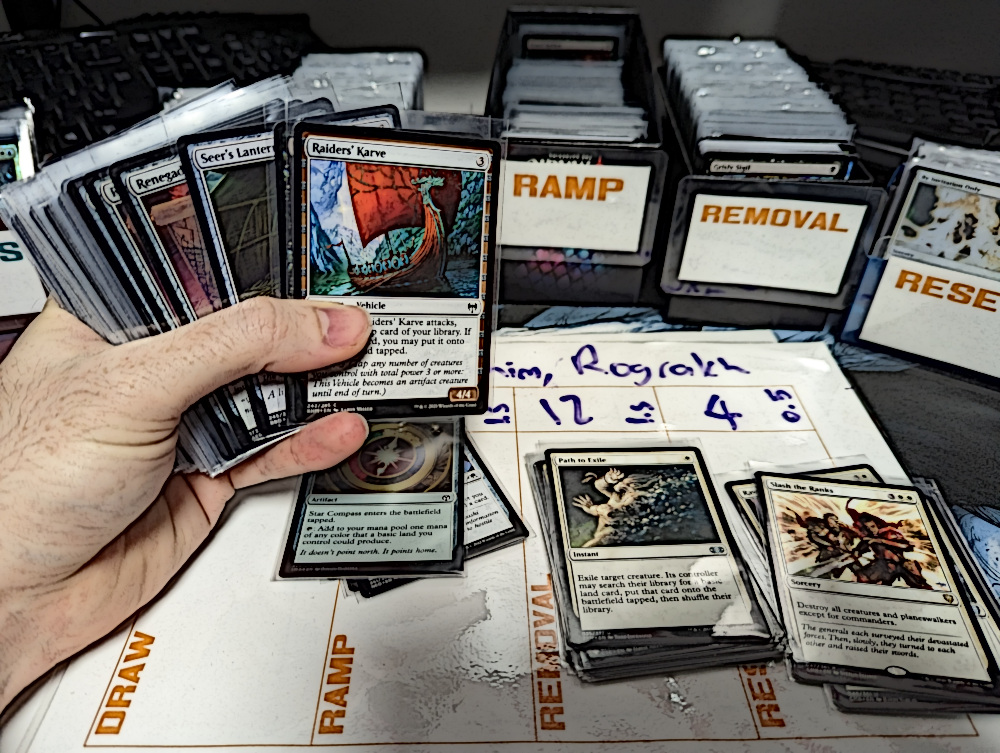
Here I want to talk briefly about organizing your collection for deck building. As you are (hopefully) already aware from reading the points made above, we have two groupings of strategies i.e. Primary and Secondary.
We can leverage these when organizing to help us build decks faster: "Keep some cards in dedicated boxes for primary strategies (ramp, draw, removal, wraths)". You can do the same thing for other popular secondary strategies such as, by creature type for tribal builds or counter spells etc. I recommend not worrying about rarity in these boxes, instead, focus on cards that have high versatility or efficiency in these boxes. Wizards has certaily over printed many cards, so don't feel pressured to put everything here. You can still follow other typical storage strategies like putting rares/mythics in files or separating cards by color. I will recommend keeping all legendary creatures aside in their own location, as this gives you a nice pool of possible commanders to choose from when you feel like building a new deck.
Note: If your collection is small, then the benefits of this are going to be somewhat minimal, but developing a habit early around this will help you in the long term. Unless you suddenly get addicted to deck building like me, and then, well... good luck.
The reason this kind of organization helps you build faster, is once you complete a recipe, you can easily pull out (the ingredients) boxes matching the particular recipe instructions, grab the number of cards for each strategy (checking your curve), and within 15-20min you have your initial version of the deck ready to go. Assembling a manabase from a similarly organized land bank can also help you build faster (don't be afraid to use tap lands in the beginning during play testing). Now I will say, that certain secondary strategies can take you some time to find, but this for me is quite relaxing. Work with the cards you have first to gain a better understanding of the commander, and play test the deck a bit to see if you get any other ideas.
This section of the 8-by-8 EDH Guide is to help understand several concepts that new starters to Commander or the 8-by-8 system may not fully grasp yet.
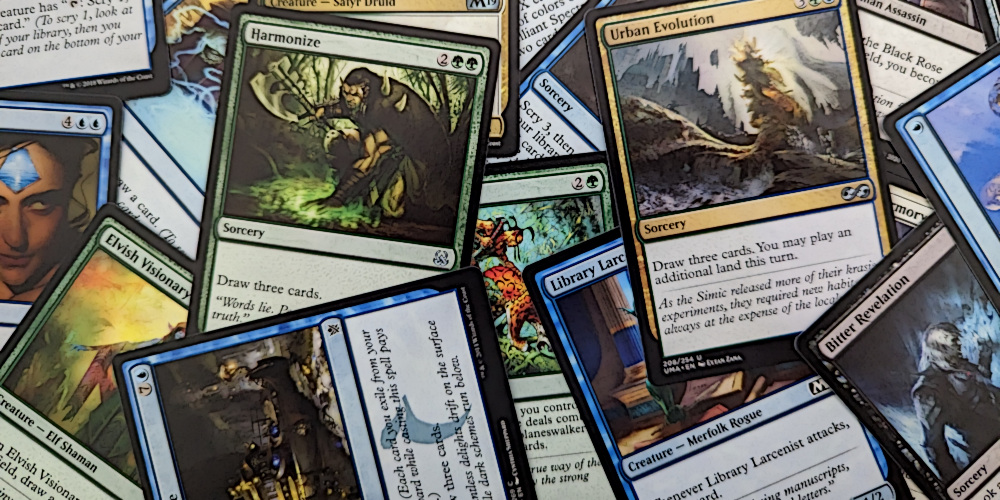
Draw typically refers to any ability or spell that results in you drawing a card from the top of your library. Card Advantage refers to any ability or spell that results in you gaining an extra card from anywhere, thus draw is a subset of card advantage strategies.
The draw primary strategy referred to in 8-by-8 recipes does not only have to contain cards that draw you cards. Instead it refers to any card advantage effects, such as flashback, unearth, cascade or putting cards into exile that you can cast later.
Effects, however, that cause you to draw a card then discard a card can only be considered card advantage if they draw more than they discard. One-for-one tutors are also just replacing one card with another, so they also don't actually give you card advantage. I would thus classify tutoring or 1 card draw then discard as separate secondary strategies and not be part of the primary draw strategy.
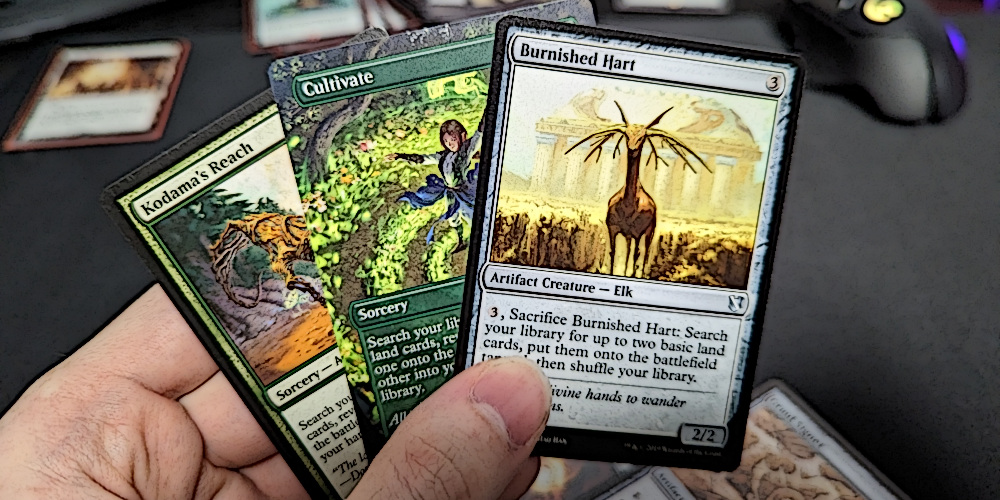
Ramp (aka "Ramping up Mana production") refers to the act of increasing your mana creation capability, beyond the basic "play one land per turn" rule. Fixing refers to the act of increasing the types of mana available, either through transmutation spells or abilities, or through being able to tutor for specific lands.
I consider creating treasures or "transient" (temporary) mana to be a form of ramp because they still increase your "potential" mana capacity, albeit temporarily. Just keep in mind, that renewable mana sources are more reliable than transient mana sources.
Keep in mind, land tutoring (searching your library for a land card) and putting it into your hand is not considered ramping or even card advantage as you did not increase your hand total or mana production total beyond what it was before you cast the spell. Ramp spells typically will put the land onto the battlefield, by passing the one land per turn limit.
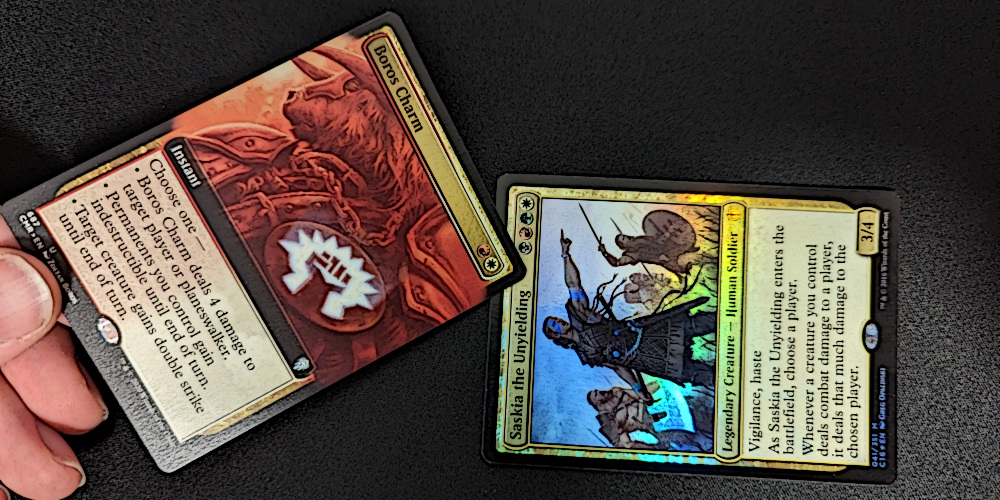
Removal refers to the act of removing something, through the resolution of a spell or ability, either through forcing a discard, moving a creature from play into exile, the graveyard or even back into the opponents hand. Interaction refers to spells or abilities that allow you to react to someone elses play. Removal is thus a subset of interaction.
The kind of removal you use often depends on the playgroup meta, such as if most people play enchantments, then having more enchantment removal makes sense. The more consistent your opponents decks are, the more focused your removal can become. This however often leads to boring and un-fun experiences, and decks that become irrelevant anywhere else.
Interaction strategies typically fall under secondary categories such as protection(giving indestructible or hexproof) or control (counter spells).
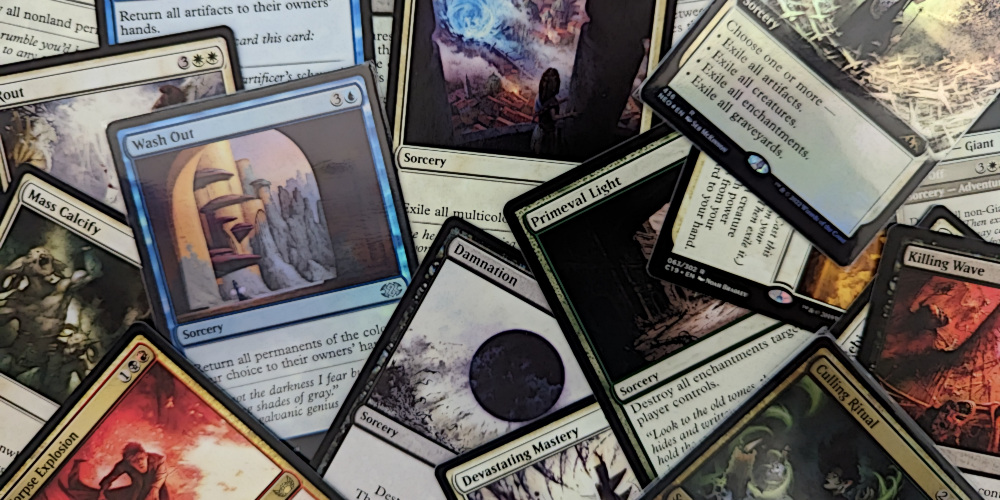
The fourth primary strategy and usually an MVS (minimum viable strategy) in size, is frequently overlooked when building decks. Wraths or Board Wipes typically destroy or exile a specific type of permanent, effectively resetting the board state. Wraths and Wipes are thus a subset of Reset strategies.
Resets refer to spells that clear a specified category of cards from any play area. You can consider things like "all players discard their hands", "exile all graveyards" or even "return all creatures to their owners hands" to all be reset strategies. The point of a reset, is to broadly perform a common effect without targeting specific cards or permanents. This often gets around things like shroud, hexproof or indestructibility.
Secondary strategies can be any topic you want, but I would be wary of choosing topics that are not focused enough. I would also be wary of picking too many MVS strategies, and would stick to 8 as the minimum to avoid issues. Its best to in this case think of MVS strategies as something that you encounter every second game.
Here are some examples of Secondary Strategies you might use:
NOTE: Hit the Refresh button to see different strategies!
Now you may be wondering if fun is quantifiable, due to its subjective nature. And you are correct, what is fun for one person is not always going to be fun for another. This is because we are all diverse, and often have different priorities and different goals and ambitions in life. So to start with, I am going to define a baseline expectation of you before you can really understand this aspect of the 8-by-8 system. I already assume that you love playing MTG, and understand the value in playing games with friends, but, have in some cases experienced games where you felt excluded or unable to participate.
One of the core purposes of the 8-by-8 system is to make games more fun, and improve deck reliability. Its choice of what to consider a primary strategy is crucial to achieve this goal, and it prioritizes balancing what we often don't put enough emphasis into.
Here are the logical progressions I used to determine the priority of strategies:
Before drawing more cards, I need to first ramp...
When I have less cards in hand, now I need to draw...
When my opponent attempts to do something, now I need to interact with the cards I drew...
This is a strategy for those of you who prioritize "winning is fun" over "playing is fun"...
Only 12 starting hands can be drawn from a typical EDH deck. For a card from a strategy to appear in all 12 starting hands, the strategy needs to contain a minimum of 12 cards.
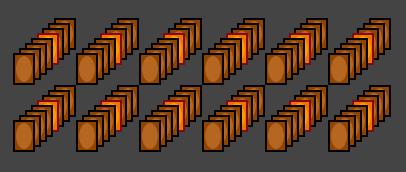
The 12 hands principle gives us a reasonable explanation as to why its important that primary strategies typically contain 12 cards. On the balance of probabilities, if a strategy consists of 12 cards, you should on average, get 1 of those in your starting hand. Logically we can infer that increasing to 16 cards will improve the chances, or decreasing to 8 cards reduces our chances. This does not mean that we will always get 1 card from each, as randomness is a cruel master of our fate, its likely we will all experience some measure of bad luck on occasion. The point here is that this balances out the probabilities the best we can, to reduce the probability of having a bad game.
To summarize:
I hope this guide helps you understand deck building and strategy design a bit better, and also encourages you to think a bit differently about the cards you choose to play. Please consider supporting the upkeep and maintenance of my projects and join The Hidden Empire on patreon: